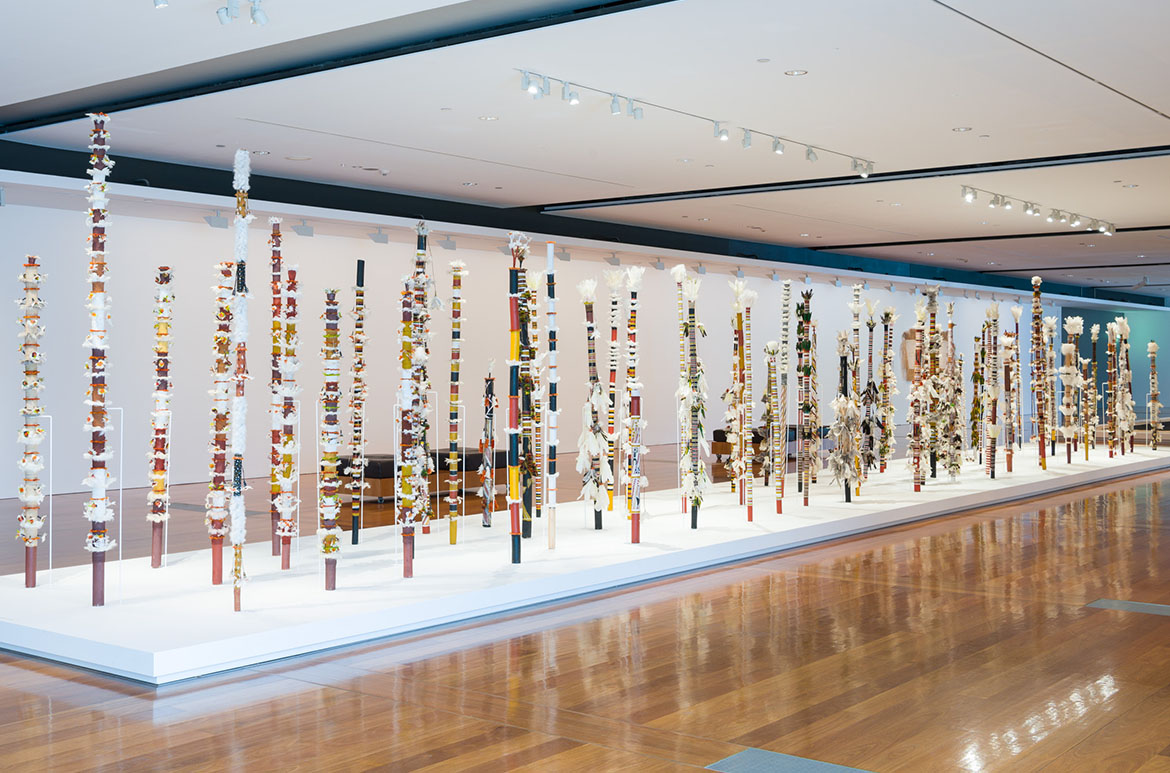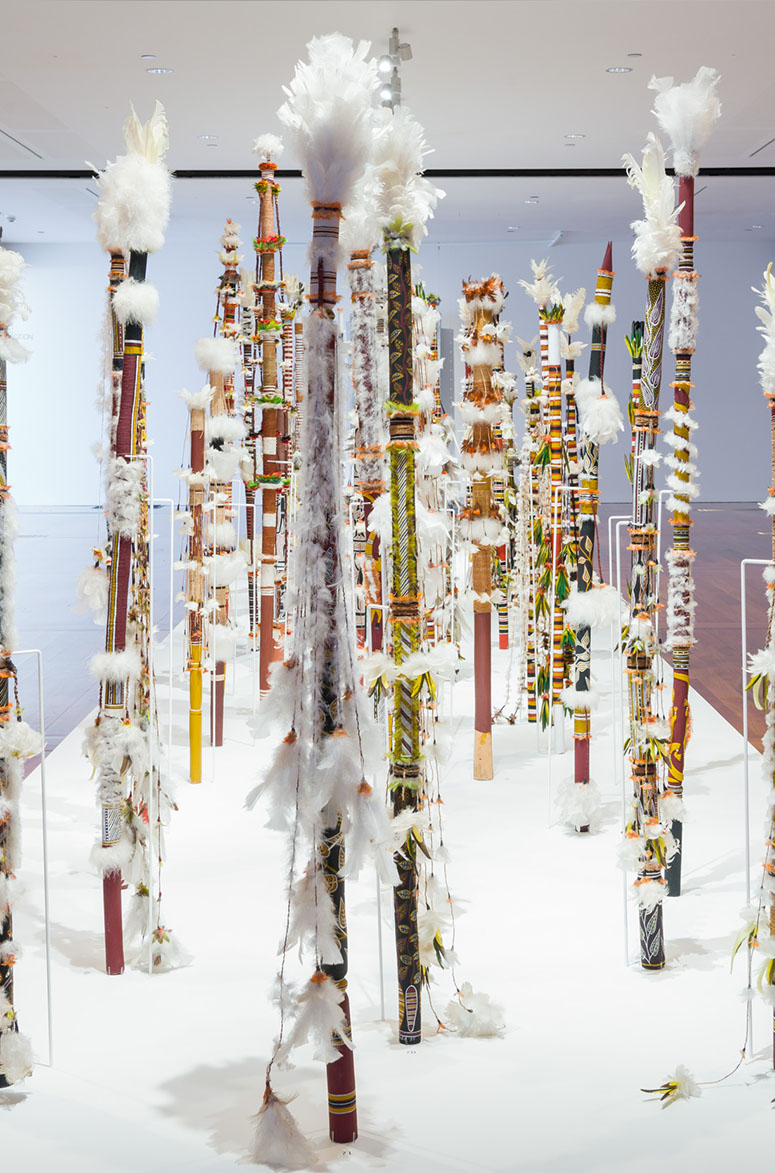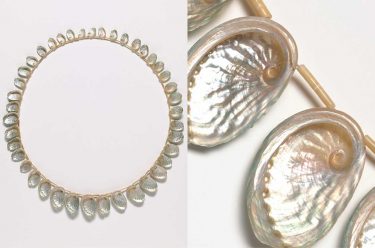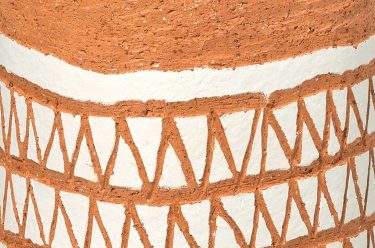The dramatic group of 76 Banumbirr (Morning star poles) from Galiwin’ku, Arnhem Land resemble those used annually in north-eastern Arnhem Land ceremonies that celebrate the morning star (the planet Venus).
RELATED: Read more about Australian Indigenous Art
SIGN UP NOW: Subscribe to QAGOMA Blog for the latest announcements, acquisition highlights, behind-the-scenes features, and artist stories.

Banumbirr is believed to have first risen in the east, lighting the way for the ancestor spirits on their journey to create people and country. After raki (string made from bark fibres and human hair) is wrapped around the poles and painted with clan designs, great lengths of feathered strings, pul pul (bunches of exquisitely composed feathers) and feather tufts representing the bright star, are attached to achieve the transcendent beauty of the poles.
Ceremonies celebrating banumbirr (the morning star) are performed annually in Arnhem Land, Northern Territory. This unique collection of poles was made by artists from Galiwin’ku (Elcho Island), a small island off the northern shores of Arnhem Land. Both men and women contribute to making the lengths of feathered strings and pul pul (bunches of feathers) attached to them. The tufts on the tips of some poles represent the bright star (Venus). Though made for public viewing, these poles are still held sacred by their makers.

It is told that each day at sunset spirits on Burralku, an island to the east, hold a morning star ceremony. As dancing intensifies the rising dust creates the twilight which gradually becomes darkness. During the day and into the night the star is hidden by an old woman in a special feathered bag. Just before dawn she releases the star on a long string. First it ascends to the top of a tall pandanus tree to survey all the places it will visit, then flies over Arnhem Land heralding the dawn, pausing over each of the clans related to it. As the sun rises the old woman reels in banumbirr by its feathered string to be hidden again until the next evening.
Read more about the Australian Collection / Subscribe to QAGOMA YouTube to go behind-the-scenes / Watch video on Indigenous Australian Art
Acknowledgment of Country
The Queensland Art Gallery | Gallery of Modern Art (QAGOMA) acknowledges the traditional custodians of the land upon which the Gallery stands in Brisbane. We pay respect to Aboriginal and Torres Strait Islander elders past and present and, in the spirit of reconciliation, acknowledge the immense creative contribution Indigenous people make to the art and culture of this country. It is customary in many Indigenous communities not to mention the name or reproduce photographs of the deceased. All such mentions and photographs are with permission, however, care and discretion should be exercised.
Lucent / Gallery of Modern Art / 27 May – 3 June 2017 / These dates mark two milestones in Australia’s reconciliation journey: The 1967 referendum and the historic Mabo decision, respectively. In 2017 two significant anniversaries in Australia’s reconciliation journey are commemorated – 50 years since the 1967 referendum, and 25 years since the historic Mabo decision.
#QAGOMA


